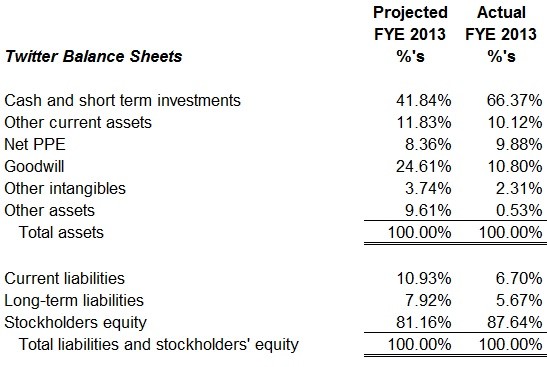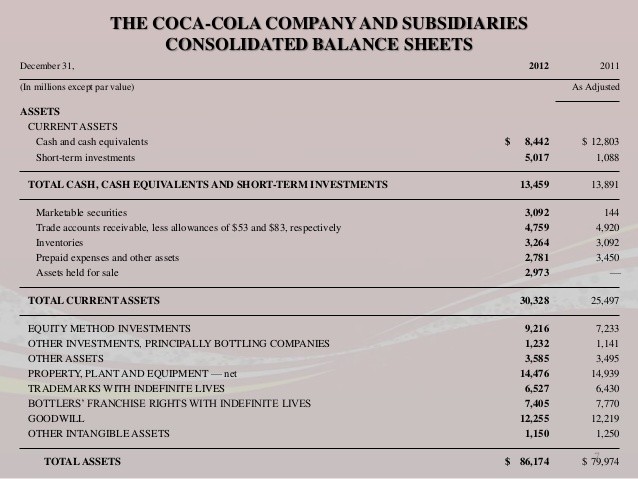How to Analyse a Balance Sheet and Assess the Investment Value of the Company – Part V
Post on: 2 Июнь, 2015 No Comment

In continuation of our articles, ‘How to Analyze a Balance Sheet and Assess the Investment Value of the Company? – Part I, Part II. Part III and Part IV ’, we present below detailed explanation of the various accounts that are normally present in balance sheets. We mainly explain the terms included in our model balance sheet in Part I in this section and subsequent sections.
Non-Current Liabilities
Loans Payable
Loans payable are the non-current portions of loans or long-term debts. These amounts are the principal amounts of loans and other long-term debts that are not due for payment in the current year. Since these loans and debts need not be fully liquidated in the present year itself, they are included in the non-current liabilities, while the portions of loans and debts payable in current year are included in current liabilities. Long-term debts and loans are availed by companies for purchase of long-term assets, such as fixed assets or permanent working capital.
Provisions (P.F. & Pension Obligations, etc.)
Provisions are at times ambiguous in financial accounting. U.S. GAAP (Generally Accepted Accounting Principles) accounting norms term provisions as expenses, while International Financial Reporting Standards (IFRS) holds provisions as liabilities. Hence, provisions can denote income tax expenses and warranty costs under U.S. GAAP accounting. On the other hand, provisions will include liability for income tax liabilities, provident fund (PF) and pension obligations, and other liabilities in IFRS.
As such, under IFRS accounting, any obligation that satisfied the definition of liabilities can be classified under provisions, even if the exact amounts of such obligations are not yet estimated. As such, provision is defined as liabilities of uncertain amounts and uncertain timing. In India, AS-29 of Indian Accounting Standards defines provisions.
Issued Debt Securities (Notes Payable, Bonds Payable, etc.)
Issued debt securities are amounts that lie between debts and equity. Subordinated officer loans, notes payable to officers, owners, or shareholders are amounts that they have to pay back. Normally, owners or shareholders make loans to the company for tax reasons, when they wish to increase the equity investments by them, instead of buying additional shares. This is done for tax reasons. Returns on investments by the owners can be paid by them as interest expenses that are tax deductible. On the other hand, if they purchase stocks, their dividend amounts will increase and they will have to pay taxes on such amounts. Hence, this procedure of notes payable to owners or shareholders is adopted widely.
Similarly, loans of officers are subordinated or placed on standby. These standby loans are considered and accepted as equity by financial institutions when they lend money to the company. Companies issue long-term bonds to raise finance. Since bonds are obligations that need not be paid immediately but only at a future date, they are included in issued debt securities under non-current liabilities. Usually, bonds are issued in bulk to one or more lenders, termed as investors. Bonds can be sold by the investors to others or they can be traded like stocks before the maturity date of bonds. For more knowledge on bonds, kindly go through our article, ‘Understand the Process of Investing in Bonds’.
Deferred Tax Liabilities
Most income statements or profit and loss accounts will have several types of incomes, while the income on the tax return filed with the Income Tax agency will be one of them. According to U.S. GAAP accounting standards, income tax liability should be calculated on income before taxes in the income statement. However, in the tax return, the taxes are calculated on the taxable income declared by the company. If the differences between these two, the difference in the liability is deferred tax liability. Deferred tax liabilities represent the portions of income tax expenses to be paid in future years. Hence, these long-term liabilities are recorded in the balance sheet as deferred tax liabilities.
Shareholders’ Equity
Paid Up Capital
Share Capital (Ordinary Shares & Preference Shares)
Paid up capital is the capital of the company that had actually been funded by shareholders. Paid up capital can be equal to or less than the total capital of the company, since the company need not issue all authorised capital shares determined in the Articles of the Company when it is formed. When all available shares had been sold to investors and public, the company is known as fully paid up. Otherwise, partially paid up capital stage exists. The company can issue shares as ordinary shares and preference shares.
Ordinary Shares
Ordinary shares represent the equity ownership of all the investors in the company. Owners of ordinary shares have voting rights in the matters that are presented to them at the General Body Meetings held by the company. This voting right will be proportionate to the percentage of shares owned by a particular shareholder. Ordinary shares do not have predetermined dividend amounts and it is the prerogative of the company management to declare dividends on ordinary shares or not declare dividends. Further, ordinary shareholders can receive their amounts only after bondholders and preference shareholders, if the company goes into liquidation or closes its business. Hence, ordinary shareholders are termed as unsecured creditors.
Preference Shares
Preference shares are those shares that are issued with a commitment to pay a fixed dividend every year, whether the company declares dividends for ordinary shares or not. Preference shareholders do not have voting rights. However, preference shareholders will receive their amounts before ordinary shareholders if the company gets liquidated. Preference shares can be issued in four types, cumulative preference shares, non-cumulative preference shares, participating preference shares and convertible preference shares.

For cumulative preference shares, dividends will have to be paid later if they are skipped in a particular year for any specific reason. However, such skipped dividends will not be included in non-cumulative preference shares. Participating preference shares allow the holders to receive fixed dividends and extra earnings, if the company decides on such payments under certain circumstances or conditions. Convertible preference shares can be exchanged for predetermined number of ordinary shares.
Treasury Shares
Treasury shares are shared held by the company in its treasury either through repurchase of shares in the markets or buyback of shares from shareholders. Even the shares not issued by the company are included in treasury shares. These shares are not entitled for dividends and they have no voting rights. Hence, they are not calculated when outstanding liabilities are calculated. Share buybacks are made when the company desires to improve its financial ratios like P/E ratio, EPS, etc. These terms will be explained in another one of our financial article.
Retained Earnings
When the company retains a portion of net earnings without issuing them as dividends, these amounts are termed as retained earnings. Such earnings are retained by a company for reinvestment in its core business or for paying specific outstanding debts. Retained earnings consist of previous retained earnings added to net income and dividends subtracted. Retained earnings help the company to reinvest in growth opportunities like buying new plant and machinery or spending on higher research & development. If the net loss exceeds retained earnings, then they become negative and a deficit arises.
Revaluation Reserves
Revaluation reserves are considered as supplementary capital. When a company revalues any of its assets, the excess amount is included in the balance sheet as revaluation reserve. This excess amount is recorded when the present and possible future value of the asset is higher than recorded cost of the asset. Since revaluation reserves are no the result of business operations, they are not included by financial institutions and in other contractual agreements as part of the capital of the company.
Other Accumulated Comprehensive Incomes
Other accumulated comprehensive incomes are also termed as accumulated other comprehensive incomes. These incomes measure gains or losses of a company that are not yet realized. Accumulated other comprehensive incomes are different net income. These amounts normally include unrealized pension costs and gains or losses on securities, derivatives, net foreign investments, and foreign currency hedges.
This concludes the explanation of various terms used normally in balance sheets. If you have any further doubts or questions on this subject, you can contact us and we will be glad to clear your doubts or answer your questions. We will be discussing the terms of income statements or profit and loss accounts and cash flow statements in our subsequent articles.














